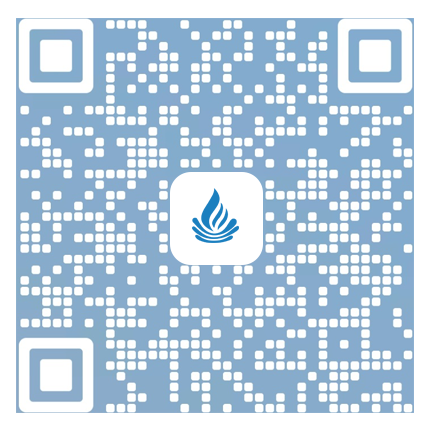In the process of using PVDF glue, you should have encountered the problem of glue discoloration, I don't know if you know the reason for the discoloration, and the most concerned, whether this glue can still be used?

For example, the color on the right side of these two cups of PVDF glue solution is relatively dark. Why does this phenomenon occur?

Here is a mechanism of discoloration, and on the left is a structural formula of PVDF that we commonly use. When there is alkaline attack, PVDF is prone to de-HF reaction, forming double bonds. As the number of conjugated double bonds increases, lone pairs will form delocalized π bonds, and this π bond is the key to the color change. It causes the wavelength of the absorption peaks to increase and the color to darken.

This is the conjugation effect. As the conjugated chain grows, the wavelength of the absorption spectrum is redshifted, and the color rendering will be more obvious. This is also why some modified PVDF, due to the optimization of functional groups, prevents the formation of long conjugated π bonds in PVDF, thus suppressing the discoloration phenomenon.
After understanding the mechanism of discoloration, we will analyze whether the discolored glue cannot be used.

First of all, let's look at a set of pictures, there are two variables in this, one is the type of PVDF, and the other is the purity of NMP.Low purity means higher levels of free ammonia.
We found that PVDF-2 showed better discoloration than PVDF-1, and in addition, the low purity NMP did cause significant discoloration of the glue. But interestingly, in the four small cups under the bottle, the PVDF in the glue is precipitated into a solid, and the color of this solid is completely different from the solution, except for some discoloration in sample 2, there is basically no difference. So this shows that the discoloration itself is not PVDF.
The most important performance of the adhesive is the adhesion performance, and we will compare the adhesion of the next 4 samples.

There were basically no significant differences. Let's look at another experiment.

Place the prepared adhesive solution at different temperatures and compare the absorption of light using a spectrophotometer. After 2 days, the higher the temperature, the greater the absorption, indicating a more pronounced color change. In addition, there was no significant change in the molecular weight of the discolored adhesive after testing.
Finally, we summarize the problem of discoloration of PVDF glue.

To put it simply, it is to control the alkaline group and temperature, and the use of modified PVDF can effectively control the discoloration, the most important thing is that from our test results, although the color may not be good, but the performance is basically not affected (We have also done a whole battery performance analysis in the enterprise before, and there is no significant impact).

Let's take a look at this problem, the problem of stirring gels with high-nickel materials, such as 811, NCA is more likely to encounter in stirring. In summary, there are three main factors - PH value, type of PVDF and humidity.
At the same time, in response to these problems, there are now some corresponding control methods, such as high-nickel materials through the washing process to reduce the PH value; PVDF is modified to control the conjugated double bonds, as well as humidity control. Many battery factories have been controlled according to the requirements of low humidity rooms.
At present, the 5130 discussed earlier is the modified PVDF, which is better for the application of high-nickel materials. We also mentioned new adhesives earlier, but the current commercialization is very limited, what is the reason for this? Let me share with you the example of lithiated PAA and PI.

Lithium doped PAA is a suitable adhesive for silicon negative electrode materials with large volume expansion, and carboxyl groups also have good ion conductivity. But why hasn't it been widely promoted and applied in bulk? Here, I have listed several core issues in full battery applications, which are basically related to the characteristics of materials.
For example, the electrode is cracked and rolled, and the lithiated PAA is a very brittle polymer, and after dehydration, the polymer chain shrinks sharply, which is manifested as a very serious electrode rolling. Although the carboxyl group brings ionic conductivity, it is also very absorbent, and if it is not baked in advance, it will cause the roll to be very sticky. The adhesive itself has average bonding strength, and if it is over-dried, it is easy to lose powder due to brittleness. The formation of gas production is also due to too strong hygroscopicity and too much moisture, resulting in very serious formation of gas production.

Polyimide is also an adhesive suitable for silicon anodes reported in Japan in the early days, but after so many years, it is basically not used much.
In addition to the above-mentioned need for high-temperature polycondensation, the difficulty of the process and the first effect of lone on electrons, there is also a very important point, the cost is very high.
So in general, many materials have a very prominent aspect, and it is no problem to do scientific research, but to develop products, what is needed is comprehensive performance, just like lithium hexafluorophosphate, none of which is outstanding, but the overall performance is very average, so it is the most widely used.
Finally, let's take a brief look at the principle of bonding.

There are three main theories here, the first two theories, the simple point is that the adhesive should be fully combined with the surface of the material to form more interfaces, in order to effectively ensure the bonding.

The third is the adsorption theory, which contains some of the chemical bonds that are ionic bonds, covalent bonds, metallic bonds, and van der Waals forces.

Finally, let's talk about the relevant influencing factors, here I will only talk about the physical factors - pressure, which is why we often find that the adhesion of the electrode is significantly better than that of unrolling after rolling, which is also said earlier, the material and the current collector form more interfacial contact, and even some particles are squeezed into the current collector to form a strong physical connection.

